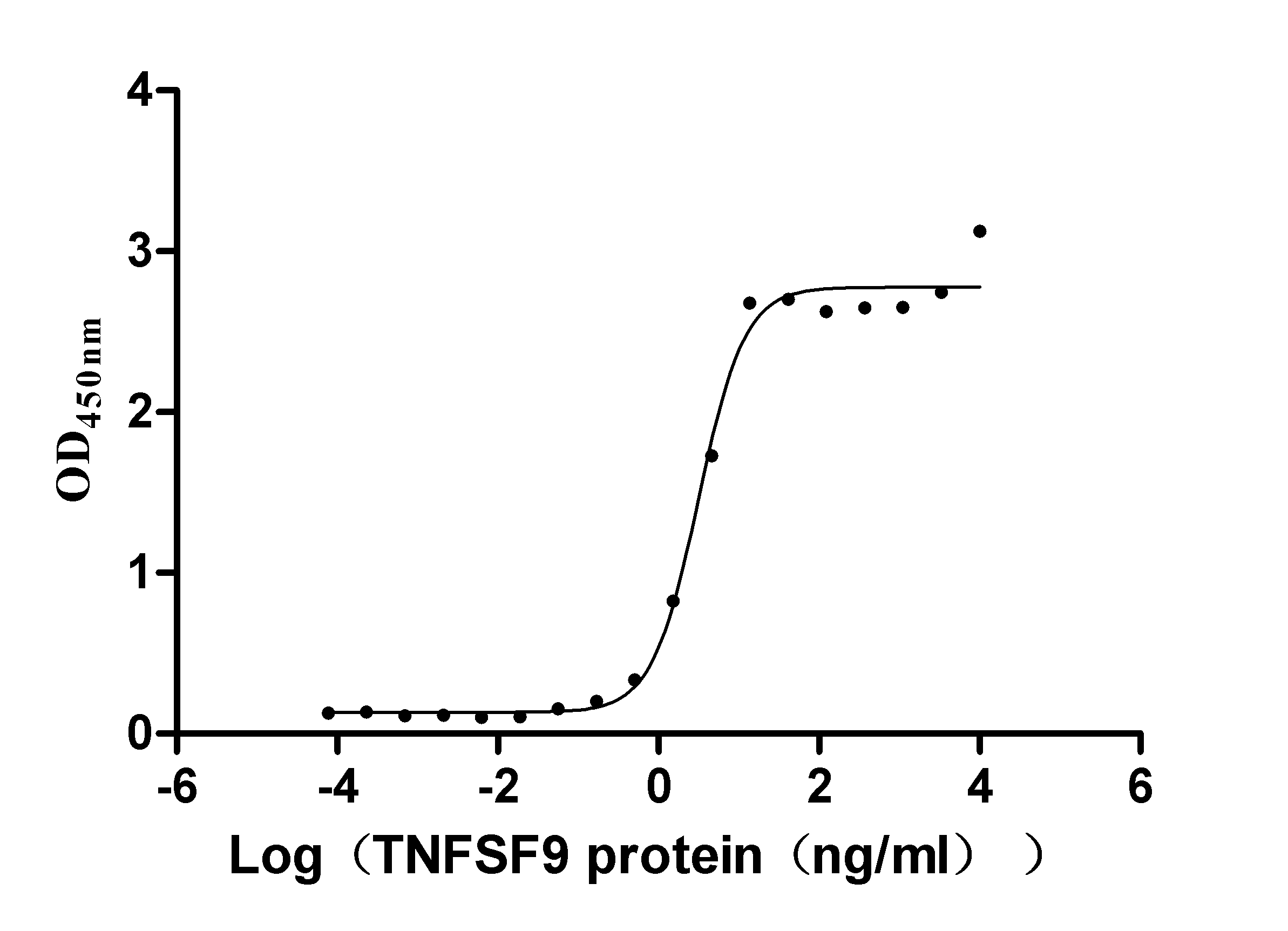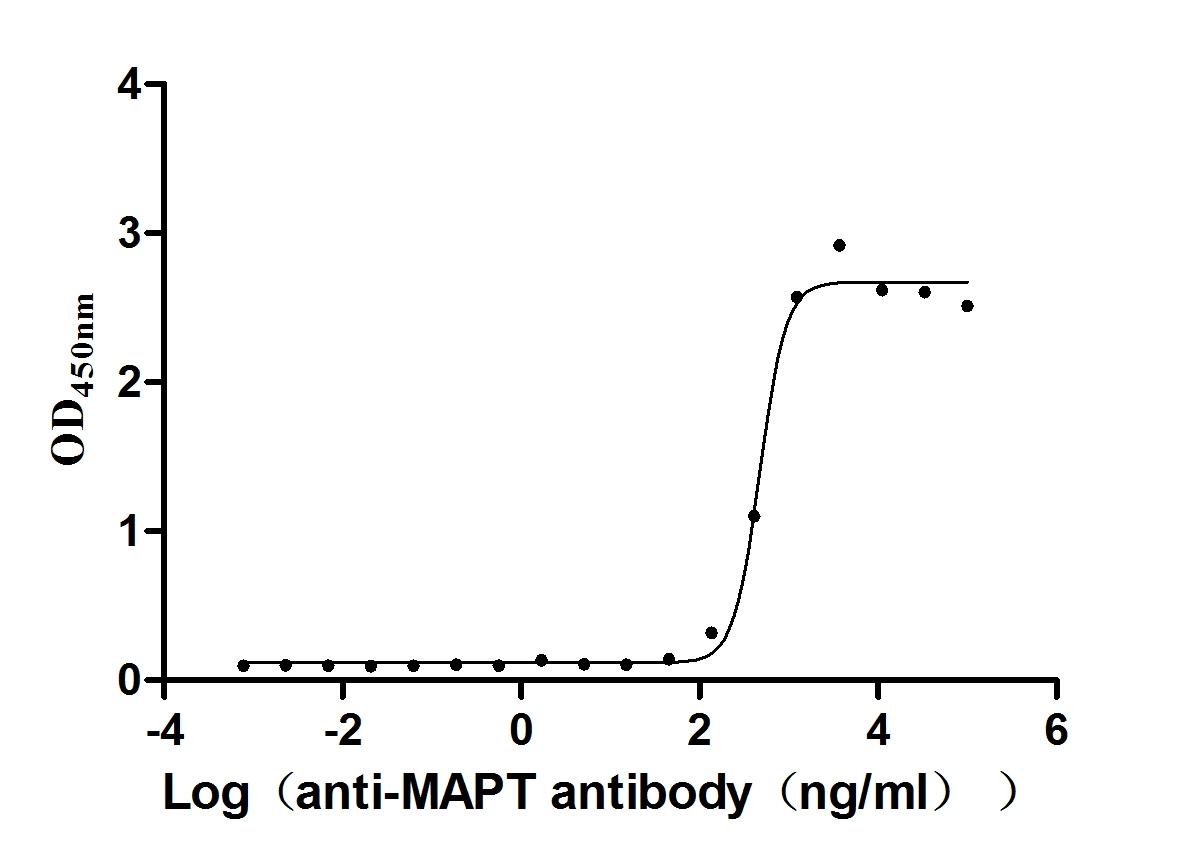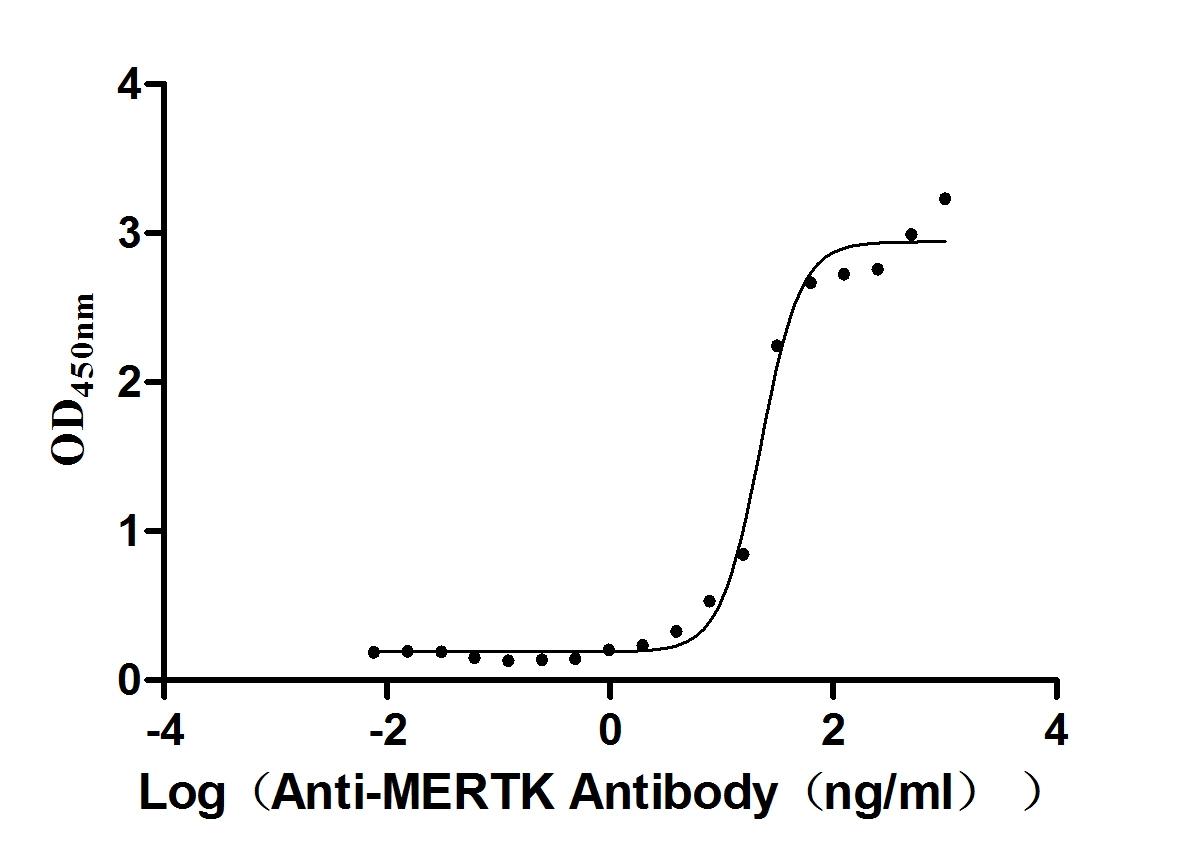Recombinant Mouse Microtubule-associated proteins 1A/1B light chain 3A (Map1lc3a)
-
中文名称:小鼠Map1lc3a重组蛋白
-
货号:CSB-YP842019MO
-
规格:
-
来源:Yeast
-
其他:
-
中文名称:小鼠Map1lc3a重组蛋白
-
货号:CSB-EP842019MO
-
规格:
-
来源:E.coli
-
其他:
-
中文名称:小鼠Map1lc3a重组蛋白
-
货号:CSB-EP842019MO-B
-
规格:
-
来源:E.coli
-
共轭:Avi-tag Biotinylated
E. coli biotin ligase (BirA) is highly specific in covalently attaching biotin to the 15 amino acid AviTag peptide. This recombinant protein was biotinylated in vivo by AviTag-BirA technology, which method is BriA catalyzes amide linkage between the biotin and the specific lysine of the AviTag.
-
其他:
-
中文名称:小鼠Map1lc3a重组蛋白
-
货号:CSB-BP842019MO
-
规格:
-
来源:Baculovirus
-
其他:
-
中文名称:小鼠Map1lc3a重组蛋白
-
货号:CSB-MP842019MO
-
规格:
-
来源:Mammalian cell
-
其他:
产品详情
-
纯度:>85% (SDS-PAGE)
-
基因名:Map1lc3a
-
Uniprot No.:
-
别名:Map1lc3aMicrotubule-associated proteins 1A/1B light chain 3A; Autophagy-related protein LC3 A; Autophagy-related ubiquitin-like modifier LC3 A; MAP1 light chain 3-like protein 1; MAP1A/MAP1B light chain 3 A; MAP1A/MAP1B LC3 A; Microtubule-associated protein 1 light chain 3 alpha
-
种属:Mus musculus (Mouse)
-
蛋白长度:full length protein
-
表达区域:1-120
-
氨基酸序列MPSDRPFKQR RSFADRCKEV QQIRDQHPSK IPVIIERYKG EKQLPVLDKT KFLVPDHVNM SELVKIIRRR LQLNPTQAFF LLVNQHSMVS VSTPIADIYE QEKDEDGFLY MVYASQETFG
-
蛋白标签:Tag type will be determined during the manufacturing process.
The tag type will be determined during production process. If you have specified tag type, please tell us and we will develop the specified tag preferentially. -
产品提供形式:Lyophilized powder
Note: We will preferentially ship the format that we have in stock, however, if you have any special requirement for the format, please remark your requirement when placing the order, we will prepare according to your demand. -
复溶:We recommend that this vial be briefly centrifuged prior to opening to bring the contents to the bottom. Please reconstitute protein in deionized sterile water to a concentration of 0.1-1.0 mg/mL.We recommend to add 5-50% of glycerol (final concentration) and aliquot for long-term storage at -20℃/-80℃. Our default final concentration of glycerol is 50%. Customers could use it as reference.
-
储存条件:Store at -20°C/-80°C upon receipt, aliquoting is necessary for mutiple use. Avoid repeated freeze-thaw cycles.
-
保质期:The shelf life is related to many factors, storage state, buffer ingredients, storage temperature and the stability of the protein itself.
Generally, the shelf life of liquid form is 6 months at -20°C/-80°C. The shelf life of lyophilized form is 12 months at -20°C/-80°C. -
货期:Delivery time may differ from different purchasing way or location, please kindly consult your local distributors for specific delivery time.Note: All of our proteins are default shipped with normal blue ice packs, if you request to ship with dry ice, please communicate with us in advance and extra fees will be charged.
-
注意事项:Repeated freezing and thawing is not recommended. Store working aliquots at 4°C for up to one week.
-
Datasheet :Please contact us to get it.
靶点详情
-
功能:Ubiquitin-like modifier involved in formation of autophagosomal vacuoles (autophagosomes). Whereas LC3s are involved in elongation of the phagophore membrane, the GABARAP/GATE-16 subfamily is essential for a later stage in autophagosome maturation.
-
基因功能参考文献:
- During the liver stage of a malaria infection, plasmodium UIS3 binds host microtubule-associated protein 1 light chain 3 (LC3) through a non-canonical interaction with a specialized surface on LC3 where host proteins with essential functions during autophagy also bind. UIS3 acts as a autophagy inhibitor by competing with host LC3-interacting proteins for LC3 binding. PMID: 29109477
- The LC3-decorated vacuoles are bound by an apparently undamaged single membrane, and fail to associate with the molecules implicated in selective autophagy, such as ubiquitin or adaptors. PMID: 28317932
- With increasing age, expression of the autophagy proteins ATG5 and LC3 in meniscus and articular cartilage was significantly reduced by 24 months. PMID: 28801209
- the conjugation of ubiquitin-like LC3 homologs to the phospholipids of membranes may change the destiny of the membranes beyond degradation through lysosomal fusion PMID: 27172324
- analysis of soluble SQSTM1 complexes and soluble complexes formed between SQSTM1 oligomers and LC3 using a combination of fluorescence microscopy-based biophysical approaches in living cells PMID: 27442348
- paxillin interacts with processed LC3 through a conserved LIR motif in the amino-terminal end of paxillin and that this interaction is regulated by oncogenic SRC activity. PMID: 27184837
- These results suggest that the Golgi complex may serve as a membrane platform for noncanonical autophagy where V-ATPase is a key player. PMID: 27512951
- LC3 was down regulated in the hypothalamus of diabetic mice. PMID: 28456145
- LC3 overexpression in 3T3-L1 preadipocytes stimulates adipocyte differentiation via direct modulation of RKIP-dependent ERK1 activity. PMID: 27470585
- These findings demonstrate that LC3 contributes to melanogenesis by increasing ERK-dependent MITF expression, thereby providing a mechanistic insight into the signaling network that links autophagy to melanogenesis. PMID: 26814135
- LC3 is exploited by coxsackievirus in both autophagy-dependent and -independent manners in vivo PMID: 26090585
- LC3 overexpression thus exerts neuroprotection through increasing alpha7nAChR expression for eAbeta binding and further enhancing autophagic activity for Abeta clearance in vitro and in vivo. PMID: 25686800
- we describe basic protocols to measure the levels of endogenous LC3 and p62 by immunoblotting in cultured mammalian cells PMID: 25484342
- Clusterin facilitates stress-induced lipidation of LC3 and autophagosome biogenesis to enhance cancer cell survival. PMID: 25503391
- Data indicate that Rubicon (Kiaa0226) and NOX2 (gp91phox) are involved in microtubule-associated protein LC3-associated phagocytosis. PMID: 26098576
- starvation activates the autophagic PI3K, which in turn induces the recruitment of COPII to the endoplasmic reticulum-Golgi intermediate compartment to bud LC3 lipidation-active vesicles as one potential membrane source of the autophagosome. PMID: 25432021
- With increasing age, the expression of LC3 in articular cartilage decreased. PMID: 25708836
- Japanese encephalitis virus replication is negatively regulated by autophagy and occurs on LC3-I- and EDEM1-containing membranes PMID: 25046112
- Deleting Atg7 or Atg5 or blocking LC3 lipidation or ATG5-ATG12 conjugation decreases ERK phosphorylation. PMID: 24240988
- FYVE and coiled-coil domain containing 1 (FYCO1), a protein previously implicated in autophagosome trafficking, is recruited directly by LC3 to Dectin-1 phagosomes. PMID: 24442442
- The LC3-associated phagocytosis (LAP) pathway, which is distinct from macroautophagy, targets L. monocytogenes during the early stage of infection within host macrophages. PMID: 23584039
- PRIP is a novel LC3-binding protein that acts as a negative modulator of autophagosome formation. PMID: 23399561
- DNA-immune complexes recruit TLR9 and autophagy protein LC3 to phagosomes through Fc-gamma receptor signaling. LC3-associated phagocytosis (LAP), which is distinct from conventional autophagy, is required for IFN-alpha secretion but not for TLR9-mediated TNF secretion. LAP mediates trafficking of TLR9 into a specialized IFN-signaling compartment that initiates IFN-alpha production. PMID: 23219390
- The effect of chronic infection with Heligmosomoides polygyrus on autophagy is associated with decreased expression and processing of LC3, a key component of the autophagic machinery. PMID: 22732589
- The LC3 participates in polarized secretion of lysosomal contents into the extracellular space by directing lysosomes to fuse with the plasma membrane. PMID: 22055344
- Autophagy machinery is recruited to pathogen-containing phagosomes, termed LC3-associated phagocytosis (LAP), which results in degradation of phagocytosed cargo. LAP occurs upon uptake of apoptotic, necrotic, and RIPK3-dependent necrotic cells. PMID: 21969579
- Data show that luminal P-PERK and LC3 levels are reduced in PERK-deficient mammary glands, whereas they are increased in human breast ductal carcinoma in situ. PMID: 21709020
- inhibition of proteasomal degradation results in increased oligomerization and activation of caspase-8 on intracellular membranes; enhanced caspase-8 oligomerization and activation are promoted through interaction with SQSTM1/p62 and (LC3) PMID: 21628531
- Mycobacterium marinum lacking the region of difference 1 (RD1) is unable to recruit LC3, indicating that a functional ESX-1 secretion system is an absolute requirement for this process. PMID: 21447143
- BopA and bipD mutants both showed a higher level of co-localization with LC3 and the lysosomal marker LAMP1. PMID: 21412437
- MURF2 expression parallels that of the autophagy-associated proteins LC3, p62/SQSTM1 and nbr1 PMID: 21185285
- p62 localizes to the endoplasmic reticulum (ER)-associated autophagosome formation site independently of LC3 localization to membranes. PMID: 21220506
- This study identifies the host cellular pathway hijacked for supplying coronavirus replication membranes and describes an autophagy-independent role for nonlipidated LC3-I. PMID: 20542253
- Data report embryonic expression patterns for LC3alpha and LC3beta, with some overlap but notable differences in the brain, and in tissues of non-neuronal origin. PMID: 18069693
- these results indicate that the LC3 conjugation system is critically involved in lipid metabolism via lipid droplet formation. PMID: 19285958
- LC3 was colocalized with the H2-DM-positive lysosomal compartments in both cortical and medullary thymic epithelial cell lines PMID: 19915056
显示更多
收起更多
-
亚细胞定位:Cytoplasm, cytoskeleton. Endomembrane system; Lipid-anchor. Cytoplasmic vesicle, autophagosome membrane; Lipid-anchor. Cytoplasmic vesicle, autophagosome.
-
蛋白家族:ATG8 family
-
数据库链接:
KEGG: mmu:66734
STRING: 10090.ENSMUSP00000029128
UniGene: Mm.196239
Most popular with customers
-
Recombinant Human Neural cell adhesion molecule L1 (L1CAM), partial (Active)
Express system: Mammalian cell
Species: Homo sapiens (Human)
-
Recombinant Human Tumor necrosis factor ligand superfamily member 9 (TNFSF9), partial (Active)
Express system: Mammalian cell
Species: Homo sapiens (Human)
-
Recombinant Mouse Microtubule-associated protein tau (Mapt) (Active)
Express system: Mammalian cell
Species: Mus musculus (Mouse)
-
Recombinant Human C-X-C chemokine receptor type 4 (CXCR4)-VLPs (Active)
Express system: Mammalian cell
Species: Homo sapiens (Human)
-
Recombinant Human Angiopoietin-2 (ANGPT2) (Active)
Express system: Mammalian cell
Species: Homo sapiens (Human)
-
Recombinant Mouse Tyrosine-protein kinase Mer (Mertk), partial (Active)
Express system: Mammalian cell
Species: Mus musculus (Mouse)
-
Recombinant Human Tomoregulin-2 (TMEFF2), partial (Active)
Express system: Mammalian cell
Species: Homo sapiens (Human)
-
Recombinant Human Tumor-associated calcium signal transducer 2 (TACSTD2), partial (Active)
Express system: Mammalian cell
Species: Homo sapiens (Human)





-AC1.jpg)
-AC1.jpg)













